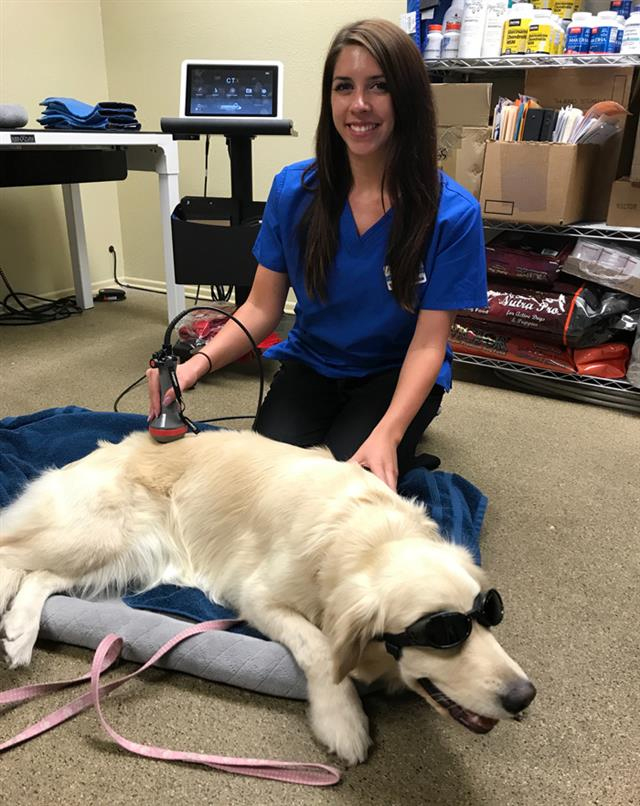Last Updated on December 31, 2023 by Fumipets
Benefits of Cold Laser Therapy Devices for Dogs
When treating your pet’s pain, pet parents are always concerned. Your little paw babies dislike medicine and have unique tactics to spit the tablets out. That is why cold laser therapy has worked like a wonder. Cold laser therapy is non-invasive yet calming, and dogs relax while having it.
What is Cold Laser therapy?
Humans have been able to treat their fur babies using laser treatment, also known as cold laser therapy, for quite some time now. The usage of cold laser treatment has grown drastically since it was introduced more than 20 years ago.
It is a newly available alternate option for treating animal aches and discomfort. By encouraging cell regeneration and boosting blood flow, laser treatment employs a laser to help in tissue repair or regeneration. A laser is a focused beam of photon radiation in the form of light. Cold laser therapy takes a few minutes and is painless and non-invasive.
How does it work?
home laser therapy for dogs is a fantastic option to relieve your dog’s suffering. Laser treatment alleviates pain by decreasing inflammation by vasodilation and promoting the lymphatic drainage system and cellular mitochondria, which helps drain swollen regions. As a result, there is less discomfort.
The laser also activates nerve cells that prevent pain signals from reaching the brain, lowering nerve sensitivity. Dogs experience less pain because there is less inflammation, swelling, and disruption of pain signals to the brain.
Laser treatments for dogs also encourage the synthesis of endorphins, which help to alleviate pain. The results are comparable to non-steroidal drugs; however, unlike them, cold laser treatment has no adverse effects.

What diseases or conditions does it have the ability to treat?
This form of laser can benefit a variety of pet health concerns with a broad scope. Cold laser treatment can also be used to address the following pet health issues:
- Vertebral disc problems
- Musculoskeletal disorders
- Acute wounds
- Infections of the ears
- Injuries to the tendons, muscles, and ligaments
- Strains in the muscles
- Soft tissue injury
- Pain after surgery
- Nerve paralysis
- Gingivitis
- Arthritis
- Infections of the anal glands
- Dysplasia of the hip
- Wobbler syndrome
- The disease of the degenerative disc
Veterinarian always makes the diagnosis. Each condition has different symptoms and pain levels. Always consult a veterinarian before using a laser to check whether your pet’s condition requires laser therapy. Several diagnostic tests should be performed on your pet before your veterinarian begins the cold laser treatment. It allows your veterinarian to evaluate which areas require treatment.
Is it similar to a surgical laser?
Surgical lasers are used during surgery to cut the tissue and have a higher frequency of reaching deeper tissues than cold laser therapy. Cold laser therapy does not produce unnecessary heat or cut into your pet. To treat the tissue under the surface, vets light a low-frequency beam of laser light over the surface of the skin and fur.
Laser therapy devices
Many devices are present in the e-market, and all have different purposes. Some are used both by humans and animals and have quite the results. They work like magic for pain. They promote the healing process by releasing salt, potassium, and calcium while improving blood flow hence pain relief. Every product has a different frequency, but they are also approved to use at home. Pricing varies according to the device.
Will my pet be uncomfortable because of it?
Laser therapy for dogs is entirely painless and soothing. Your dog may experience a moderate and comforting warmth or no feeling while applying the laser. Laser treatment is highly soothing for many pets. As painful or inflamed parts become more comfortable.
How frequently can I use it?
Although improvement is commonly visible after the first appointment, your dog’s health will determine how frequently and for how long laser therapy is required. Treatment times vary, but most locations take 3 to 8 minutes usually. Because cold laser treatments for dogs are cumulative, each successive session helps your dog’s condition improve even more. The length and frequency of treatments vary depending on the problem, so consult your veterinarian about developing an appropriate laser therapy program for your dog. The duration and frequency of treatment are influenced by the degree, origin, location of the pain, and your paw baby’s age.
Is it best to do it at home or at a vet clinic?
Pain is distressing for dogs like everybody else. They do not require a remedy that would exacerbate their stress. Cold laser therapy provides your dogs with a pleasant, light-pulsing treatment. Cold laser therapy treatment rooms should be large and pleasant, with plenty of natural light. Like yoga, you may place your pet on a mat to help them rest. A cold laser treatment session might last anywhere from three to twenty minutes. Your pet identifies the people, the setting, and the equipment with something pleasurable even before the next session begins. So, the choice depends on the condition of your pet. If the pain is manageable at home, it would be the best option as a home is a 100% stress-free area.
Are there any precautions?
Cold laser treatment is a very safe method. The intensity of light radiation employed poses no danger of burning your dog. If anyone looks directly at the laser beam, they have the greatest risk of retinal injury. The laser operator must use protective goggles to avoid this. Dogs are also usually given safety goggles, or their eyes are protected or turned away from the beam throughout the treatment.

Should I expect any side effects?
Laser therapy for dogs has no known adverse effects and is widely accepted in the veterinary field as both safe and effective.
Conclusion
This therapy is a fast-growing option for pets due to its unique ability of non-invasiveness and promising results in pain relief. It works in three phases and mostly requires only 3-4 weeks. Your dog might feel weird about the blinking laser light at the first session, but after they become acquainted with the device, they will cooperate.


















